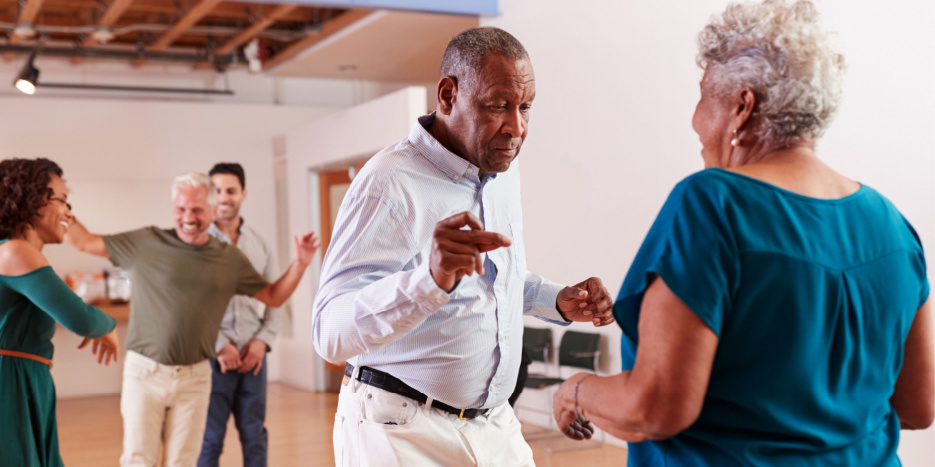Canadians of all ages are not nearly as active as we could be. Just 52% of adults aged 40 to 59 and 33% of adults aged 60 to 79 get the recommended 150 minutes per week of moderate-to-vigorous physical activity. This is activity that increases your heart rate and body temperature.
And, it’s not just 2.5 hours a week of heart-pumping activity that Canada’s 24-Hour Movement Guidelines recommends. Several hours a day of light activities (including standing and gardening) are also recommended, as are twice-weekly activities that strengthen your muscles. For adults 65 and older, an extra set of activities that challenge and improve balance are also encouraged.
The goal of the guidelines is to get us to sit less and move more because every little bit helps.
Gyms are not for everyone
Not everyone enjoys going to a gym. There are certainly benefits to it, but it is not everyone’s cup of tea. For fun alternatives, you may want to consider the following low-impact sports and activities to help keep you moving each week:
1. Aquafit.
Aquafit is a low-impact, water-based fitness class. It’s a full-body workout. Thanks to the buoyancy of the water, however, exercises are done with relative ease and minimal strain on your body’s joints and muscles. There’s also no fear of falling and getting hurt -- unlike land-based exercises -- which is ideal for people with difficulties balancing.
2. Curling.
Curling is a great way to enjoy winter. In the year prior to the pandemic, Curling Canada estimated that nearly 2 million Canadians had tried their hand at curling at least once. There are about 1,500 curling clubs in Canada, and the game can be adjusted for players with mobility difficulties, so almost anyone can get out and play.
3. Cycling.
As the saying goes, once you learn how to ride a bike, you never forget it. It’s an easy, low-impact way of exercising. However, if you’ve never learned to ride a bike or if it causes you physical discomfort, consider a recumbent bike. These are uniquely designed bicycles (or tricycles) that have the rider in a reclined seated position that minimizes joint pressure. There are always stationary bikes too, if you prefer to stay indoors.
4. Dancing.
Whether on your own at home or in a class at your local dance studio or community centre, dancing is a great way to get moving. And, if you choose the latter, it’s also a great way to meet new people. Organized dance classes are often targeted to a specific age group or ability, so you will most likely be dancing with those in a similar age group and skill level as you are.
5. Lawn bowling.
Lawn bowling is a low-impact game typically played outdoors. The goal is to throw your bowl (a ball with a weighted bias, so it curls in a particular direction) to a target – the ‘jack’ – at the opposite end of the lawn. It’s a social game that involves a good amount of walking. There are lawn bowling clubs across Canada.
6. Pickleball.
Pickleball is a racquet game that combines components of tennis, table tennis, and badminton. The ball has holes in it and resembles a Wiffle® ball. It is particularly popular with older adults because it is a low-impact activity that gets the blood moving. Pickleball Canada estimates that the number of players in 2022 now nears 1 million, compared to 350,000 players just two years ago.
7. Tai Chi.
Tai Chi is a low-impact, slow-motion exercise that is easy on your joints and can help maintain strength, balance, and flexibility. It’s often done in groups outdoors when the weather is nice but is easily taken indoors when it’s not. There are five types of Tai Chi, and although there are similarities among them, each type emphasizes a different style of body movement.
8. Walking.
Walking need not be boring! From hiking to bird watching and mall walking, every step counts. It’s even more fun if you organize a step challenge. Whether it’s through your watch, pedometer, or smartphone, chances are the steps you walk a day are probably already tracked. Why not make it more interesting by challenging others, which in turn will challenge you?
9. Yoga.
Yoga checks many of the boxes to help you stay active. It strengthens muscles, improves flexibility and balance, and can be adapted to any skill level or ability. Plus, there are many types of yoga for variety, so you won’t easily get bored. You can do yoga online at home, take a group class, or opt for one-on-one instruction.
Every move matters
When it’s time to get moving, every bit helps your health. But before setting out, talk to your doctor, especially if you have pre-existing health conditions. Once you’ve got the green light, remember to take it slow. Listen to your body and work your way gradually towards your goal.





 Travel and lifestyle
Travel and lifestyle